Dead Man’s Fingers
It’s cold on Dartmoor but it’s always worth making it to Fingle Bridge. I’m looking forward to a pint in the pub later, but first it’s time to stride out.
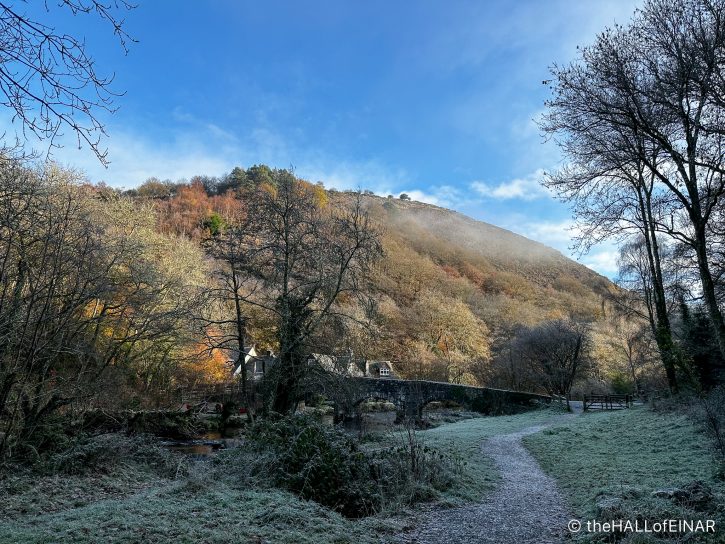
There’s a fabulous fungus on this dead tree stump:
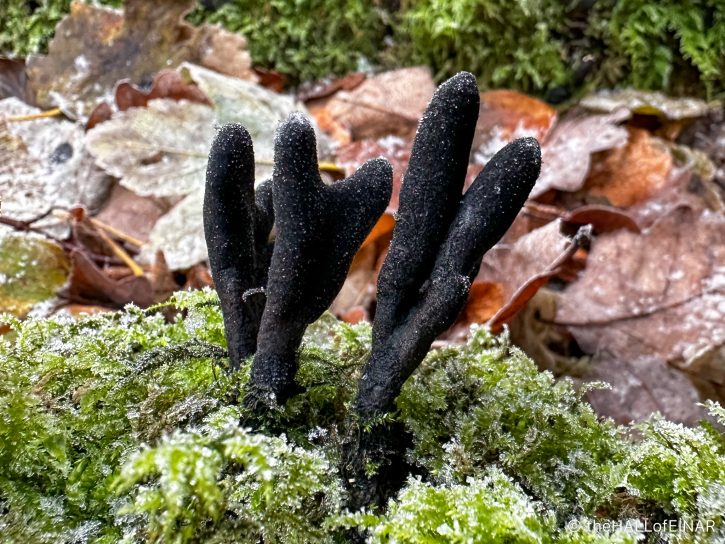
It’s called Dead Man’s Fingers and produces a range of strange finger-like shapes, all rounded and black, protruding from stumps. It’s a special kind of fungus because it doesn’t break down the lignin or cellulose of the dead tree, but feeds upon the much easier to digest polysaccharides.
Plants turn water and carbon dioxide gas into sugars by using sunlight. That’s the magic of photosynthesis, which sustains most life on Earth. They then join these sugars together into chains called polysaccharides. Poly means many and saccharide means sugar, so polysaccharides are ‘many sugars’ in a chain. One of the common polysaccharides is cellulose, which is the main plant fibre which makes up plant cell walls. Half of wood is cellulose, and cotton fibre is 90% cellulose. Cellulose is useful as the fibre in our diet and the clothes on our backs but we haven’t evolved the ability to digest it. You have to be a ruminant animal to do that, with a specialised stomach full of bacteria making a digestive soup inside your insides. Lignin adds strength and stiffness to plants and is found in wood and bark. It’s totally indigestible. Much of our coal deposits consist of lignin from plants.
I stumble back with a mind full of fungi, rotten trees, ruminants and coal deposits.
These Dead Man’s Fingers are taking the easy route and feeding on the simple to digest parts of a dead log. Who can blame them? Why bother with the effort of digesting a tricky meal when you can just eat something easy.
Back at the pub I look at the menu and decide to have the soup.
More Fungi
 Extinction Advent calendar – Day 8 Extinction Advent Calendar - Day 8. It’s not just animals and plants which are suffering in Britain. Degradation and loss… read more
Extinction Advent calendar – Day 8 Extinction Advent Calendar - Day 8. It’s not just animals and plants which are suffering in Britain. Degradation and loss… read more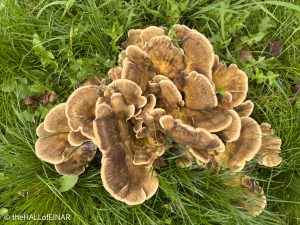 The Giant Polypore The Giant Polypore, Meripilus giganteus, is giant and has many pores on its underside. It's also called the Black-Staining Polypore… read more
The Giant Polypore The Giant Polypore, Meripilus giganteus, is giant and has many pores on its underside. It's also called the Black-Staining Polypore… read more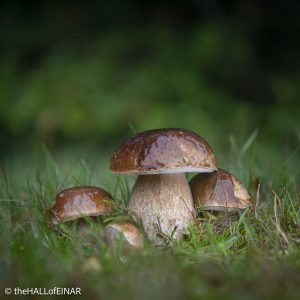 Penny Buns It's wet again and my trousers are soaking after lying in a wet field photographing these marvellous Penny Buns, Ceps,… read more
Penny Buns It's wet again and my trousers are soaking after lying in a wet field photographing these marvellous Penny Buns, Ceps,… read more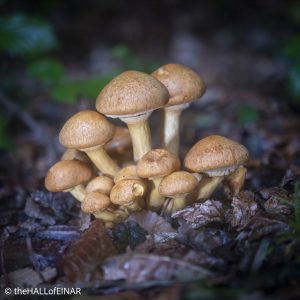 The Spectacular Rustgill It's that season again. There are dense clusters of Spectacular Rustgills in this woodland. In the light they are a… read more
The Spectacular Rustgill It's that season again. There are dense clusters of Spectacular Rustgills in this woodland. In the light they are a… read more Ash downfall Here's a Cramp Ball. There are hundreds of them here. They love dead or dying Ash trees. I've been taking… read more
Ash downfall Here's a Cramp Ball. There are hundreds of them here. They love dead or dying Ash trees. I've been taking… read more St George’s Mushrooms Last week I said we should be getting St George's Mushrooms soon. This week, they arrived. By the side of… read more
St George’s Mushrooms Last week I said we should be getting St George's Mushrooms soon. This week, they arrived. By the side of… read more Dacrymyces deliquescens There's a tiny orange fungus on this wet rotting wood. I recognise it from my childhood. It can only be… read more
Dacrymyces deliquescens There's a tiny orange fungus on this wet rotting wood. I recognise it from my childhood. It can only be… read more Velvet-stemmed Little Flame December is the best time to find Velvet Shank fungus, Flammulina velutipes. It's a species I found as a child:… read more
Velvet-stemmed Little Flame December is the best time to find Velvet Shank fungus, Flammulina velutipes. It's a species I found as a child:… read more You can set your calendar by its appearance Hypholoma fasciculare is a great name for a fungus. read more
You can set your calendar by its appearance Hypholoma fasciculare is a great name for a fungus. read more